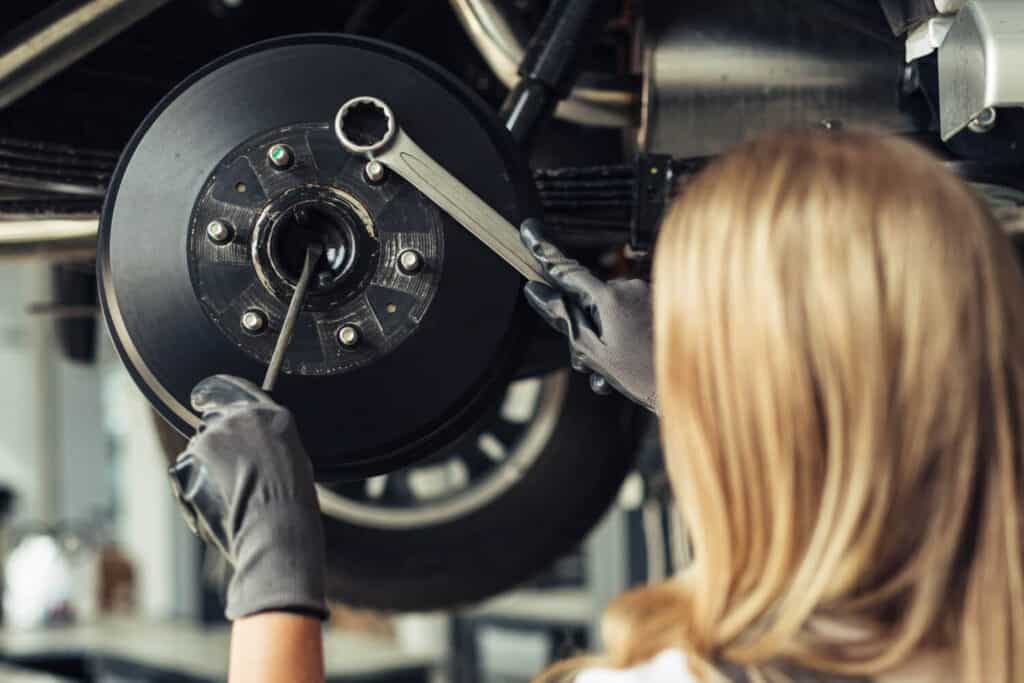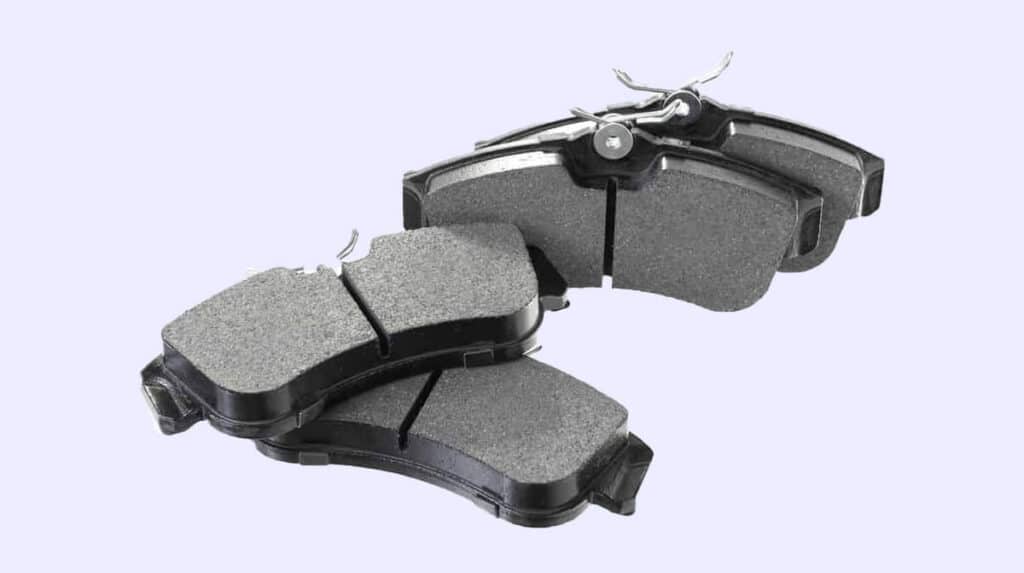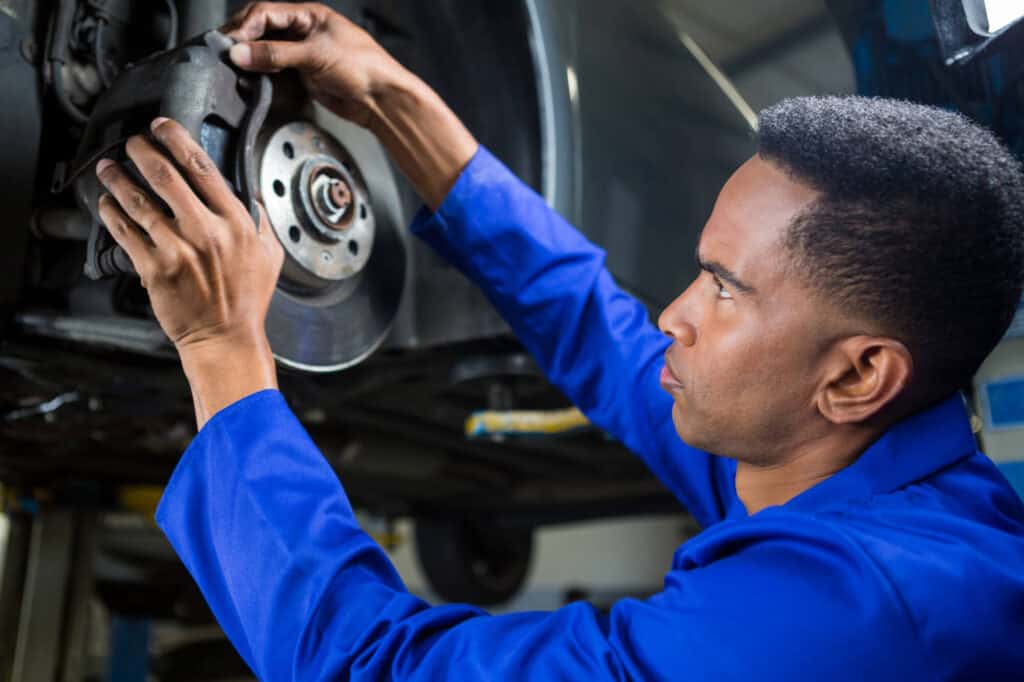Introduction: The Importance of Reliable Brakes for Emergency Response Vehicles
In emergency response situations, every second counts. A well-maintained brake system is crucial for the safety and efficiency of emergency response fleets, including police, fire, and ambulance vehicles. This article explores the specialized needs of these fleets, focusing on brake system health, maintenance, and selecting the right components to ensure optimal performance.

Unique Challenges Faced by Emergency Response Fleets
High-Speed Maneuvers and Frequent Braking
Emergency response vehicles often need to navigate through traffic at high speeds while responding to critical situations. This requires frequent braking and high-speed maneuvers, putting extra strain on the brake system. As a result, it’s crucial for emergency response fleets to have brake components designed to handle these demands, ensuring safe and efficient operation.
Heavy Vehicle Weight and Equipment Loads
Emergency response vehicles often carry heavy equipment, such as medical supplies, firefighting gear, or specialized tools. This added weight puts additional stress on the brake system, making it essential to choose brake components designed to accommodate these loads. Brake systems for emergency response fleets must provide consistent stopping power, even under the most demanding conditions.
Varied Driving Conditions and Terrain
Emergency response fleets operate in a variety of driving conditions, from congested urban environments to rural areas with challenging terrain. Brake systems must be able to perform consistently across these varied conditions, ensuring reliable stopping power regardless of the situation. Selecting the right brake components can help ensure that emergency response vehicles are prepared to handle any scenario.
Selecting the Right Brake Pad Materials for Emergency Response Vehicles
Organic Brake Pads: Pros and Cons
Organic brake pads are made from a combination of fibers, resins, and other materials. While they may be more affordable, they tend to wear more quickly and may not provide the performance needed for emergency response vehicles. Their lower heat tolerance and tendency to produce more brake dust make them less suitable for the demands placed on emergency response fleets.
Semi-Metallic Brake Pads: Pros and Cons
Semi-metallic brake pads contain a mix of metal and other materials, offering a balance between performance and durability. These pads provide good heat dissipation and consistent stopping power but may produce more noise and be harder on brake rotors than other options. For emergency response fleets, semi-metallic pads may be a suitable choice, but it’s essential to weigh the benefits against potential drawbacks.
Ceramic Brake Pads: Pros and Cons
Ceramic brake pads offer superior performance and durability, making them an excellent choice for emergency response vehicles. They provide consistent braking power, low noise, and reduced brake dust. However, they tend to be more expensive than other options, so fleet managers must consider the cost when making their decision.

Brake Rotors for Emergency Response Fleets: Performance and Durability
The brake rotors are another critical component of a fleet’s braking system. Emergency response vehicles require rotors designed to handle high heat and stress generated during frequent braking. Ventilated and slotted rotors can help dissipate heat more effectively, enhancing performance and extending rotor life.
Upgrading Brake Systems for Enhanced Performance and Safety
High-Performance Brake Calipers
Upgrading to high-performance brake calipers can improve brake system responsiveness and overall stopping power. These calipers are designed to handle the demanding conditions faced by emergency response vehicles, ensuring consistent performance when it matters most.
Ventilated and Slotted Brake Rotors
Ventilated and slotted brake rotors can help improve heat dissipation, reducing the risk of brake fade during high-speed maneuvers and frequent braking. By upgrading to these types of rotors, emergency response fleets can enhance braking performance and extend the life of brake components.
High-Performance Brake Lines and Fluid
Upgrading brake lines and fluid can help maintain consistent brake pressure and reduce
the risk of fluid boiling during high-stress situations. High-performance brake lines and fluid are designed to handle the high temperatures and pressures generated in emergency response vehicles, contributing to better overall brake system performance and reliability.
Brake System Maintenance Best Practices for Emergency Response Fleets
Regular Inspections and Maintenance Scheduling
To ensure optimal brake system performance, emergency response fleets should establish a regular inspection and maintenance schedule. This includes checking brake pads, rotors, calipers, and fluid levels, as well as replacing worn components as needed. Adhering to a maintenance schedule can help identify potential issues before they become critical, reducing downtime and ensuring fleet safety.
Proper Break-In Procedures for New Brake Components
When installing new brake components, it’s essential to follow proper break-in procedures to maximize their performance and lifespan. This includes gradually increasing the stress on the brakes over time, allowing the components to adjust to the high demands of emergency response vehicles. Following these procedures can help ensure that new brake components perform optimally from the start.
Driver Training and Awareness
Educating fleet drivers on the importance of brake system health and proper braking techniques is vital for maintaining vehicle safety and performance. Drivers should be trained to recognize warning signs of brake issues and report them promptly. Additionally, they should be encouraged to practice defensive driving techniques that minimize unnecessary braking and reduce wear on brake components.

The Importance of Brake System Health for Fleet Driver Safety
Ensuring that the brake systems in emergency response vehicles are well-maintained is crucial for fleet driver safety. A healthy braking system can make the difference between a successful emergency response and a potentially disastrous situation. Fleet managers should prioritize brake system maintenance and upgrades to enhance driver safety and reduce the risk of accidents.
Conclusion: Ensuring Optimal Brake System Health for Emergency Response Fleets
Emergency response fleets face unique challenges when it comes to brake system health. By selecting the right brake components, following best practices for maintenance and inspections, and educating drivers on brake system health, fleet managers can ensure their vehicles are prepared to handle any situation. Investing in brake system health is an investment in the safety and efficiency of emergency response fleets, ultimately contributing to more effective emergency response and safer communities.
